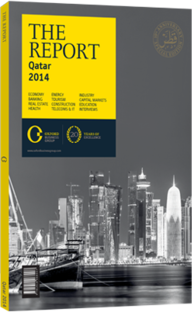Looking to the sun: Expanding production of solar power is a top priority
With the aim of diversifying its economy, Qatar’s National Development Strategy states, “Sustaining prosperity over the long-term requires wise management of exhaustible resources to ensure that future generations inherit ample means to meet their aspirations.” The strategy calls for diversifying energy production to include renewable sources. Given the local climate, the country has identified solar power as a key technology for development, and the government is investing in building up capacity in the sector.
Qatar Foundation
The Qatar Foundation (QF) is currently one of the key organisations helping to lead efforts to realise the country’s solar ambitions. In 2010, QF launched Qatar Solar Technologies (QST ec) through Qatar Solar, a subsidiary of QF that leads its solar-related programmes. As part of this effort, QST ec plans to build a $1bn-plus polysilicon plant that will produce around 8000 tonnes of high-purity solar-grade material per year. Total capacity will eventually be expanded to 45,000 tonnes per year.
Polysilicon is the raw material used to produce photovoltaic (PV) cells that can directly convert sunlight into electricity. According to QF, the polysilicon produced at QST ec’s plant will be enough to eventually power 240,000 houses for an entire year. The company has a broad strategy of expanding its products across the entire solar PV value chain, with a goal of eventually building a fully integrated solar industry.
Solar Energy Potential
By one estimate, every square kilometre of Qatar receives solar energy equivalent to 1.5m barrels of crude oil annually. According to Abdullah bin Hamad Al Attiyah, president of the Administrative Control and Transparency Authority, Qatar aims to produce 20% of its energy from renewable sources by 2024. In 2012 the Ministry of Energy and Industry announced plans to tender a contract for an 1800-MW solar plant in 2014. The project will cost between $10bn and $20bn and will be used to power water desalination plants. Water desalination, which accounts for a majority of the local water supply, is an expensive process due to the amount of energy required.
Booz & Company estimates that desalination accounts for 10-25% of energy consumption for countries in the GCC. In 2013 Qatar took another clear step towards its solar ambitions with a $48m investment in Germany’s SolarWorld. The investment was financed through Qatar Solar, which now owns a 29% stake in the firm. QST ec and the Qatar Electricity and Water Company also signed a memorandum of understanding in 2012 to jointly develop solar applications for water production.
Potential Growth
There are concerns over the cost and efficiency of solar power in a region plagued by dust and humidity, however. According to a report by the Centre for Sustainable Technologies in India, dust accumulation on a solar PV systems can reduce efficiency by as much as 32%. Solar electricity is also significantly more expensive than electricity generated using natural gas. According to figures from the US Energy Information Administration’s “Annual Energy Outlook”, the average cost of a gas-fired plant can vary from $67 to $130 per MWh depending on the type of plant, as compared to $144 per MWh for solar PV plants and $261 per MWh for solar thermal plants.
Qatar is also investing in building capacity and expertise further up the solar value chain. Green Gulf, a private Qatari company, recently launched a solar testing facility at the Qatar Science and Technology Park (QSTP) under a joint venture with Chevron. The firm has established a 35,000-sq-metre facility at QSTP to test and refine PV technologies for local conditions. The research will be used to understand the most efficient and cost-effective solar technologies. “Solar represents Qatar’s strongest opportunity for alternative energy, with over 35 technologies being tested at QSTP to determine which one is the best fit for the market,” Carl Atallah, president of Chevron Qatar, told OBG. According to Omran Hamad Al Kuwari, CEO of Green Gulf, the sector will need to assess the opportunity cost in terms of the environment and potential export revenues gained by selling gas currently used for power generation.
You have reached the limit of premium articles you can view for free.
Choose from the options below to purchase print or digital editions of our Reports. You can also purchase a website subscription giving you unlimited access to all of our Reports online for 12 months.
If you have already purchased this Report or have a website subscription, please login to continue.

